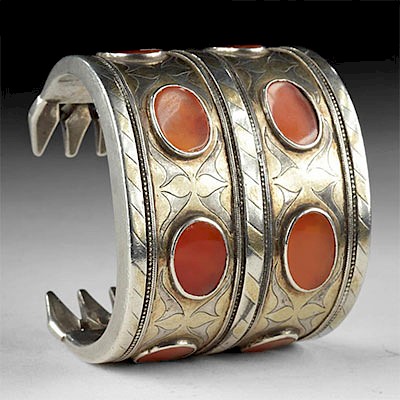Olmec Jadeite Spoon Necklace
Lot 97a
About Seller
Artemis Fine Arts
686 S Taylor Ave, Ste 106
Louisville, CO 80027
United States
Selling antiquities, ancient and ethnographic art online since 1993, Artemis Gallery specializes in Classical Antiquities (Egyptian, Greek, Roman, Near Eastern), Asian, Pre-Columbian, African / Tribal / Oceanographic art. Our extensive inventory includes pottery, stone, metal, wood, glass and textil...Read more
Estimate:
$1,900 - $2,850
Absentee vs Live bid
Two ways to bid:
- Leave a max absentee bid and the platform will bid on your behalf up to your maximum bid during the live auction.
- Bid live during the auction and your bids will be submitted real-time to the auctioneer.
Bid Increments
| Price | Bid Increment |
|---|---|
| $0 | $25 |
| $300 | $50 |
| $1,000 | $100 |
| $2,000 | $250 |
| $5,000 | $500 |
| $10,000 | $1,000 |
| $20,000 | $2,500 |
| $50,000 | $5,000 |
| $100,000 | $10,000 |
| $200,000 | $20,000 |
About Auction
By Artemis Fine Arts
Aug 6, 2019
Set Reminder
2019-08-06 11:00:00
2019-08-06 11:00:00
America/New_York
Bidsquare
Bidsquare : VARIETY SALE | Antiquities & Ethnographic Art
https://www.bidsquare.com/auctions/artemis-gallery/variety-sale-antiquities-ethnographic-art-4326
Around the world & back in time - be amazed at the treasures you will find. Antiquities from Egypt, Greece, Italy and the Near East, Asian, Pre-Columbian, African / Tribal / Oceanic, Native American, Spanish Colonial, Russian Icons, Fine Art, much more! All categories, all price ranges... Artemis Fine Arts info@artemisgallery.com
Around the world & back in time - be amazed at the treasures you will find. Antiquities from Egypt, Greece, Italy and the Near East, Asian, Pre-Columbian, African / Tribal / Oceanic, Native American, Spanish Colonial, Russian Icons, Fine Art, much more! All categories, all price ranges... Artemis Fine Arts info@artemisgallery.com
- Lot Description
Pre-Columbian, southern Mexico/Guatemala, Olmec culture, ca. 1150 to 550 BCE. A pretty grey-green jadeite spoon necklace, with a long, rectangular trough forming its upper portion and a thin, slanted trough that connects to a round bowl forming its lower portion. The upper trough has been pierced through the back for suspension. Psychoactive substances seem to have been used in ritual near-universally in ancient Mesoamerica. The Spanish recorded the practice when they arrived, and items found through archaeological investigations attest to how important drug use was in the culture for ritual and healing. Size: 2.5" W x 3" H (6.4 cm x 7.6 cm); 4.7" H (11.9 cm) on included custom stand.
This necklace was made by carving, string cutting, drilling, and using sandstone as an abrasive, all remarkable achievements, given that jadeite is an incredibly hard stone to work. Olmec artisans used long distance trade routes to acquire the material, bringing jadeite from Eastern Guatemala, over three hundred miles from their homeland. The stone seems to have been associated with water, vegetation, and young corn, the staple food of Olmec life. Based on burial practices, particularly the objects from important burials at La Venta in the present day Mexican state of Tabasco, we believe that jade was reserved for high nobility, royalty, and the gods.
Provenance: private Hawaii, USA collection; ex-private Ian Arundel collection, California, USA
All items legal to buy/sell under U.S. Statute covering cultural patrimony Code 2600, CHAPTER 14, and are guaranteed to be as described or your money back.
A Certificate of Authenticity will accompany all winning bids.
We ship worldwide and handle all shipping in-house for your convenience.
#143637Wear to surface commensurate with age, with some encrustation in lower profile areas.Condition
- Shipping Info
-
All shipping is handled in-house for your convenience. Your invoice from Artemis Gallery will include shipping calculation instructions. If in doubt, please inquire BEFORE bidding for estimated shipping costs for individual items.
-
- Buyer's Premium



 EUR
EUR CAD
CAD AUD
AUD GBP
GBP MXN
MXN HKD
HKD CNY
CNY MYR
MYR SEK
SEK SGD
SGD CHF
CHF THB
THB














